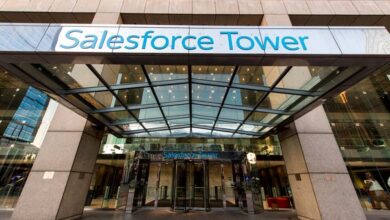Zoholics 24 – plenty of CRM for everyone, plus lots of AI

At Zoho’s Zoholics 24 user conference in Austin, the key themes were collaboration, productivity, and integration, with several announcements in the business applications and collaboration space and around developer tools and security – and, of course, Artificial Intelligence (AI). Zoho continues to differentiate its approach and thinking to business software development with a people-first strategy: investing in talent for the long-term gives the company a very cost-effective development strategy balanced with a lot of road map continuity.
CRM for Everyone
On the applications front, Zoho announced CRM for Everyone, the next generation of its customer relationship management (CRM) solution designed to support the cross-functional workflows around customer operations. With CRM for Everyone, Sales can directly assign a task to another team such as legal, marketing, or solution engineering and track the progress of requests across departments, and workflows for cross-departmental processes (such as technical proposal development, contract review, or customer case study requests) can be configured, launched, tracked, and managed.
This is enabled through two constructs. First, team modules enable each team to have a space within CRM with their own view of the data, fields, and processes. Team or module-level permissions can be set on data and actions to ensure teams and individuals can only view data and workflows they should. Second, requester profiles allow adjacent teams to request a service or deliverable they need to serve customers and progress the deliverable from one team to another without leaving CRM.
The desire to bring collaboration and CRM together is not new. In fact, CRM vendors have been trying to incorporate collaboration into CRM for decades. The challenge has been getting users to use another collaboration tool in addition to their horizontal collaboration tools. There are a couple of key differences here:
- First, this is about extending CRM to oversee customer and deal-related collaboration between sales and other teams that typically happens in horizontal channels (like e-mail) today.
- Second, this is about bringing non-CRM users into those workflows so progress can be tracked and aligned with deals (while Zoho has not announced CRM for Everyone pricing yet, it’s expected to be significantly less for those in non-sales roles than full Zoho CRM licenses).
- Third, this is about reducing the volume of communication by providing full visibility into workflow progress and automating workflows that typically require a lot of e-mails today – like asking for a customer reference or engineering support with a prospect.
- Finally, this is about bringing a much more flexible and usable approach that can be adjusted over time by teams – not business analysts or administrators – so they can “own” their processes and data.
Bringing the CRM data and collaboration context together in one place enables greater visibility to understand cross-departmental collaboration bottlenecks that are slowing deal flow, and a richer and more complete data set for AI to digest. One can imagine a future where AI assistants push stalled workflows along, or sales uses Cliq (Zoho’s chat app) to initiate a request to marketing for presentation materials for a specific deal that automatically creates a workflow that is tracked in CRM for Everyone.
A key factor for successful adoption of CRM for Everyone is that there is, in fact, something in it for everyone, meaning it can’t be just another tool that enables sales to put demands on other departments. Visibility will be key here. Enabling non-Sales teams to see how their inputs are contributing to deals, and when Sales may be making unnecessary requests too frequently, will help to make this an enabling tool for all.
It’s also to point out that CRM for Everyone is also showing the power of the Zoho’s platform (and suite approach) by bringing core capabilities like collaboration, analytics, and AI together within a CRM environment, and by enabling business users (not IT or system admins) to create their own views of data and collaboration.
Collaboration and productivity
Enhancing collaboration and productivity horizontally was also a key theme of Zoholics. Zoho has continued to invest in its collaboration and project management modules, and benefits from being able to reuse common components like workflows across multiple modules.
The company announced enhancements across its Projects, Notebook, WorkDrive, and Sign collaboration tools with the themes of artificial intelligence (AI), automation, and industry customization:
- Zoho Projects introduced natural language processing (NLP) capabilities based on Zia (Zoho’s AI engine) to summarize charts and dashboards using voice commands and generate task recommendations.
- Zoho Notebook leverages Zia to enable smart summarization, task management, visual chart creation from notes, and calendar event creation.
- Projects, WorkDrive, and Sign added Blueprint (Zoho’s visual workflow automation tool) to enable users to build workflows directly within those tools. In WorkDrive, for example, this means users can build and customize review and approval workflows for documents.
My take
As the other leading desktop productivity application vendors enable their products with AI, these steps were necessary for Zoho to stay competitive, but they also highlight Zoho’s long-term engineering strategy to invest in productivity and other platform capabilities like AI that can be cost-effectively extended in context across its product suite.


